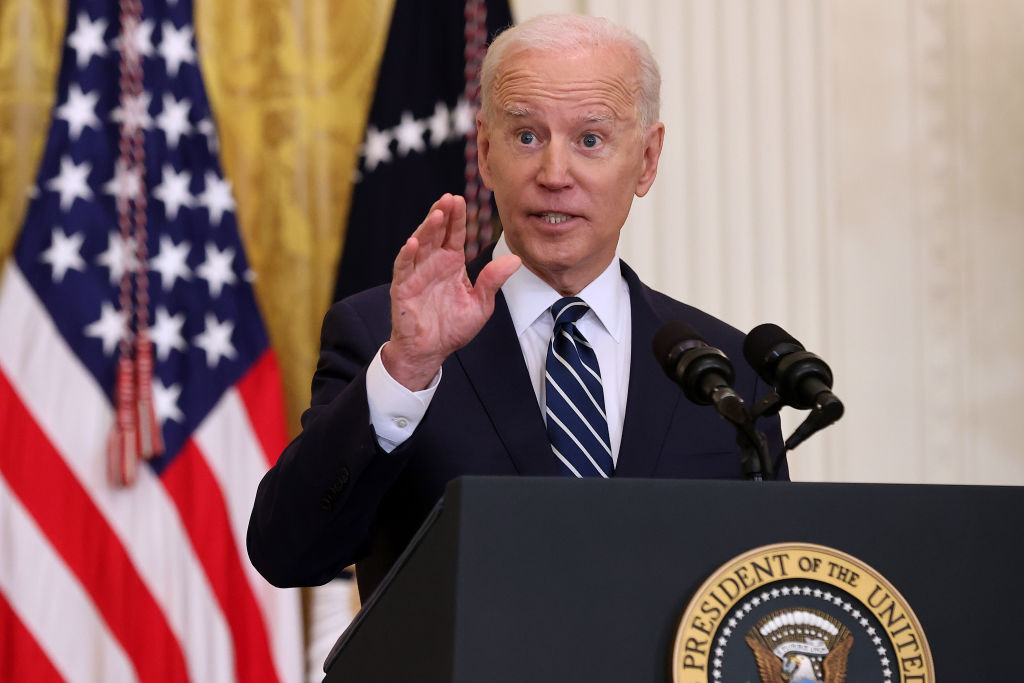
In an 8-1 ruling Friday, the U.S. Supreme Court reinstated the federal government’s immigration enforcement guidelines dictating which unauthorized immigrants should be prioritized for arrest and deportation. The court decided that Texas and Louisiana, the states that challenged federal guidelines, lacked standing to bring the suit.
The suit, United States v. Texas, centered around a 2021 memo from the Biden administration that instructed Immigration and Customs Enforcement (ICE) to prioritize arrests of immigrants who had serious criminal records, were threats to national security, or had recently entered the country illegally. The policy diverted from former President Donald Trump’s hardline approach, encouraging arrests of anyone who was in the U.S. without authorization. Biden’s policy generally avoids arresting immigrants who’ve been residing in the U.S. for years without committing serious crimes.
Republican leaders in Texas and Louisiana challenged the policy in federal court last summer arguing that it limited ICE agents from fully enforcing immigration laws. Once lower court judges blocked the federal policy, the Supreme Court agreed to hear the case.
The ruling is a victory for the Biden administration and the White House has reiterated its priority to be intentional about who is detained and deported, given limited and strained government resources.
Here’s what to know about the case.
Policy disputes
Roughly 11 million people are in the U.S. without authorization, compared to about 6,000 ICE deportation agents. Homeland Security Secretary Alejandro Mayorkas called Biden’s shift to target arrests on limited groups to save resources, an exercise of prosecutorial discretion.
However, Republican politicians have persistently argued that Biden’s border security and immigration enforcement is too lax, contributing to increases in illegal entry to the U.S. and crime.
U.S. District Judge Drew Tipton, appointed by Trump, blocked the policy in June 2022, calling it unlawful. Unlike the recent Supreme Court ruling, Tipton deemed that Texas had standing because the state was able to prove it had unauthorized immigrants, who in some cases, had committed crimes.
The Supreme Court reviewed the case previously in July 2022, rejecting the White House’s request to immediately restore the federal policy, but agreed to hear the government’s appeal.
The ruling
Justice Brett Kavanaugh wrote the U.S. v. Texas opinion for the majority, upheld by Chief Justice John Roberts and Justices Sonia Sotomayor, Elena Kagan, and Kentanji Brown Jackson.
“In sum, the states have brought an extraordinarily unusual lawsuit,” Kavanaugh wrote. “They want a federal court to order the Executive Branch to alter its arrest policies so as to make more arrests. Federal courts have not traditionally entertained that kind of lawsuit; indeed, the States cite no precedent for a lawsuit like this.”
Kavanaugh added that the court was “not the proper forum” for the dispute, but that the states were welcome to pursue recourse through other means, including Congressional oversight and appropriations, or policy changes. If the Supreme Court had ruled in favor of the states, it could’ve set precedent for states to interfere in federal regulation going beyond just immigration, he warned.
Justices Clarence Thomas, Neil Gorsuch, and Amy Coney Barrett concurred, voting with the majority that the states lacked standing, but holding different rationales for why. Justice Samuel Alito was the lone dissenter. Alito rebutted that the majority opinion gave the federal government “sweeping” powers, arguing that states had standing to sue.
More Must-Reads from TIME
- Donald Trump Is TIME's 2024 Person of the Year
- Why We Chose Trump as Person of the Year
- Is Intermittent Fasting Good or Bad for You?
- The 100 Must-Read Books of 2024
- The 20 Best Christmas TV Episodes
- Column: If Optimism Feels Ridiculous Now, Try Hope
- The Future of Climate Action Is Trade Policy
- Merle Bombardieri Is Helping People Make the Baby Decision
Contact us at letters@time.com